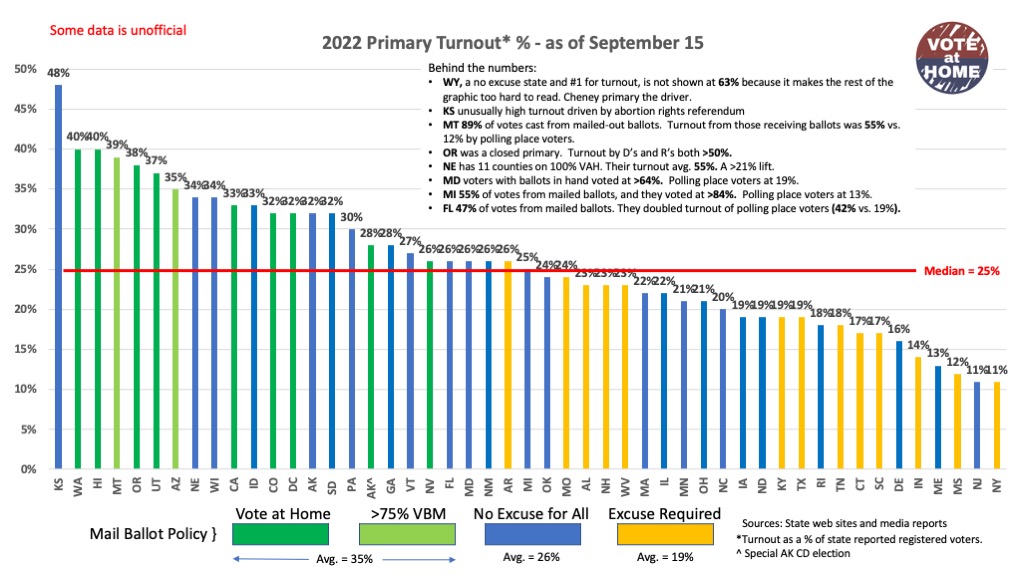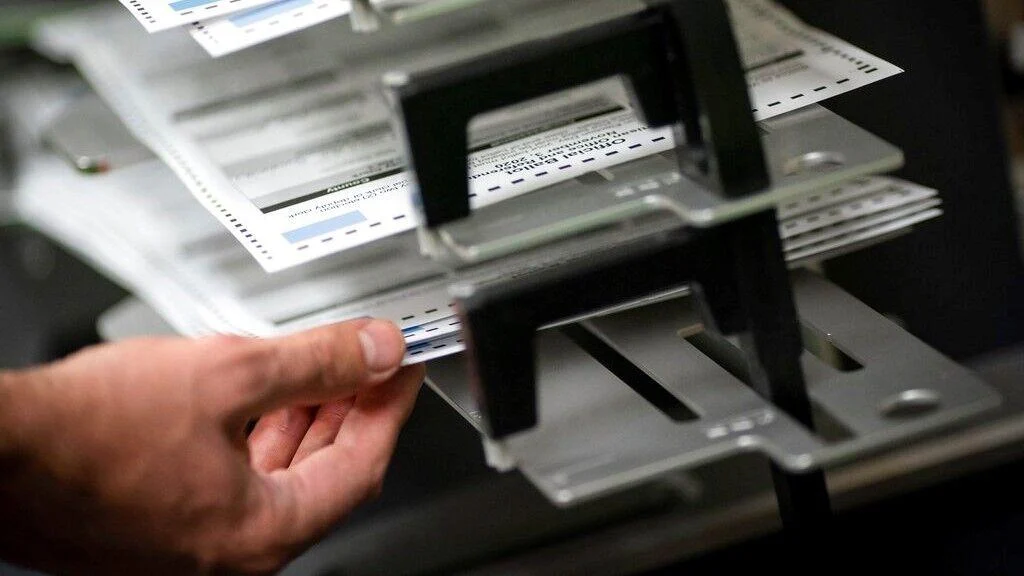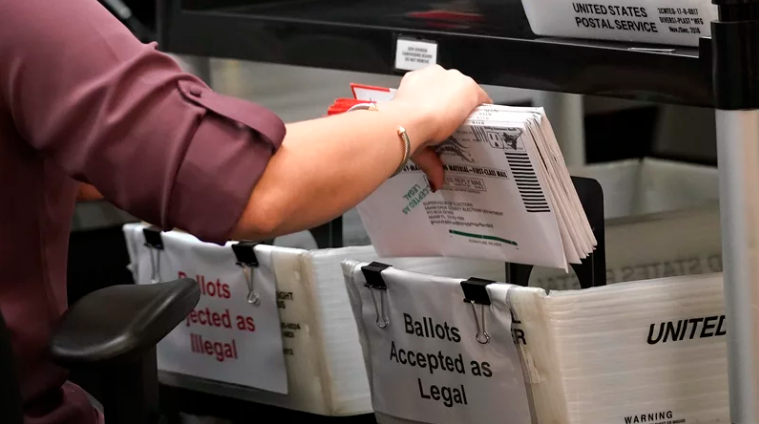Since 2020, mail-ballot use has been on the rise across the U.S., resulting in more voters having access to the ballot box. The 2022 primary elections were no exception.
Massachusetts Voters Solidly Embrace Mail Balloting
Gloucester Daily Times – Massachusetts voters are clearly still enthusiastic about voting through the mail. Nearly 529,000 ballots were cast by mail or dropped off at city and town halls before polls closed at 8 p.m. Tuesday, according to the Secretary of State’s office.
Examination to Tabulation: Ballot Pre-processing Policies Explained
In this explainer, Bipartisan Policy Center and National Vote at Home Institute focus on the states that allow election workers to run ballots through scanners before Election Day. This policy provides the most preparation for tabulation, which occurs after polls close on Election Day and before the release of unofficial results. By understanding the benefits of this policy along with other ballot pre-election processes (ranging from verifying signatures to curing ballots), policymakers can expedite the release of unofficial election night returns, mitigating the harmful impacts of election mis- and disinformation.
Effect of Mail Applications and Ballots in Nebraska’s 2020 General Election in
In this research prepared for the National Vote at Home Coalition, researchers find that full vote-at-home precincts in Nebraska experienced as much as 4.6 percentage points of greater turnout than polling-place precincts. In addition, automatically mailing absentee ballot applications to all voters helped increase turnout across the state.
Ensuring All Votes Count: Reducing Rejected Ballots
“This brief studies trends in mail ballot rejection rates in 2020 compared to previous years and how different factors, including sets of policies and policy changes, the political environment, and voter outreach, may have contributed to these changes in an extraordinary election year. Our main findings include:
- Mail ballot rejection rates decreased in most states in 2020 compared to 2018, and a number of states saw a consistent drop from 2016 to 2018 to 2020.
- Certain states that adapted their voting laws to make mail voting more accessible in 2020, particularly in the South, saw especially pronounced changes in rejection rates.
- In North Carolina, rejection rates vary from county to county. Previous studies of other states’ rejection rates found similar trends.
- States that implemented mail ballot policies, including ballot curing, increased ease of access when returning mail ballots at boards of elections, early voting sites, drop boxes, and ballot tracking, saw lower rejection rates than those that didn’t, though we caution against assuming a causal relationship.
- Previous academic and advocacy research suggests that voters of color, young voters, and first-time voters are disproportionately more likely to have their mail ballots rejected.”
Illinois Voters May Opt to Vote-By-Mail in All Elections
NBC Illinois – Elections officials are sending applications for permanent permission to vote by mail to each of the state’s 8 million registered voters. No one is obligated to sign up. But for as long as they stay at the same address, those who do will receive ballots they can complete at home and put in the mail for all future elections.
Debate Over: Vote by Mail Boosts Turnout
Washington Monthly – It is increasingly clear that vote by mail boosts election participation and that whichever party does the most to convince its voters to utilize mail ballots will have an edge in November.
Mail-Ballot Delivery Helped Boost Turnout in D.C. Primary
Washington City Paper – D.C.’s decision to mail ballots to every eligible voter helped boost participation in wards 7 and 8. And that’s no small thing, considering that politicians have been puzzling over how to reach more people in the city’s poorest, most underserved neighborhoods basically ever since the mayor-for-life finished his last term in office.
Pennsylvania Supreme Court Upholds State’s 2019 Mail-in Voting Expansion
PBS NewsHour – A wide expansion of mail-in voting in Pennsylvania survived a legal challenge on Tuesday before the state Supreme Court in a case brought by some of the same Republican state representatives who voted for the legislation nearly three years ago.
To Avoid Disqualified Ballots, Vermont Voters Now Get to Fix Certain Errors
NECN – A new state law in Vermont means voters can get a second chance to ensure their ballot is counted if they made certain mistakes in filling them out in early voting.










